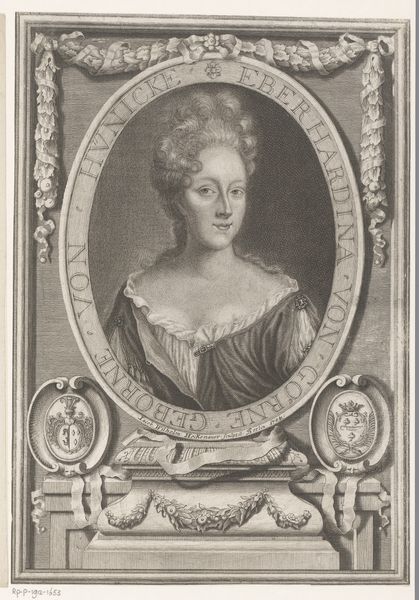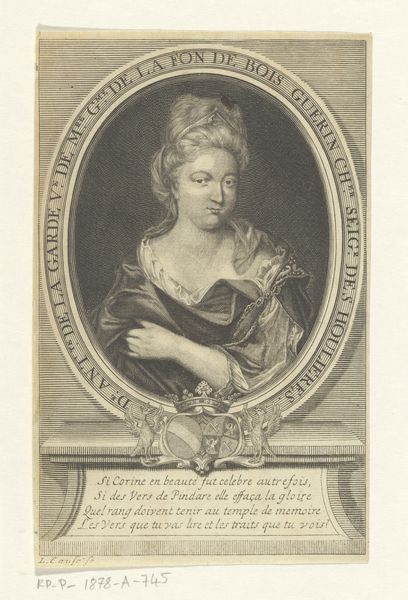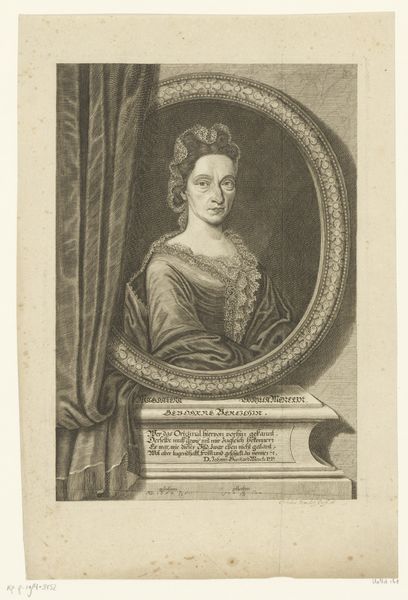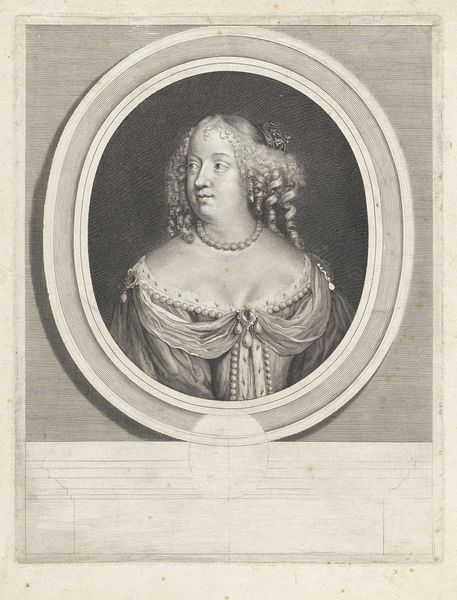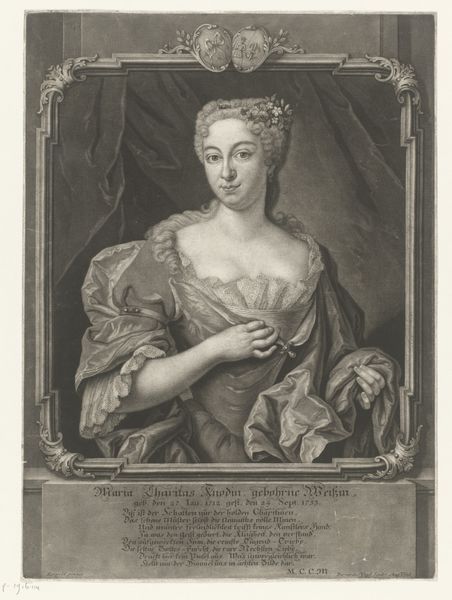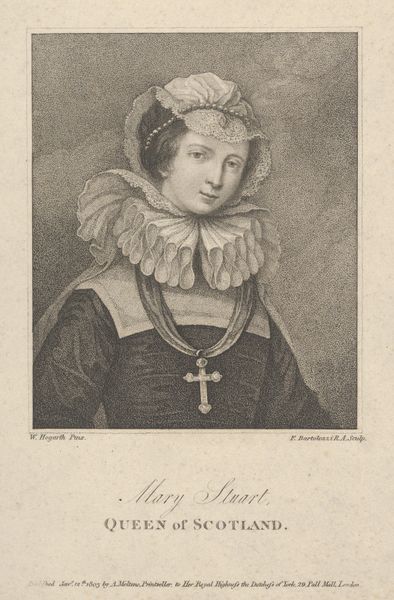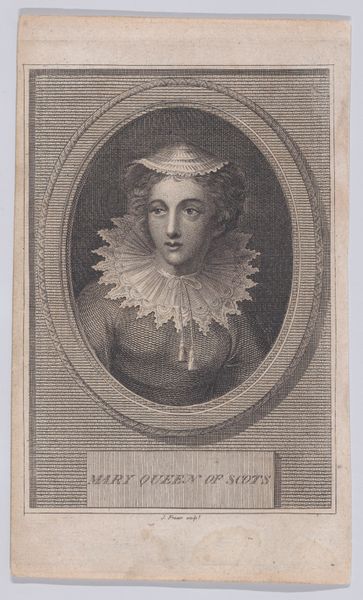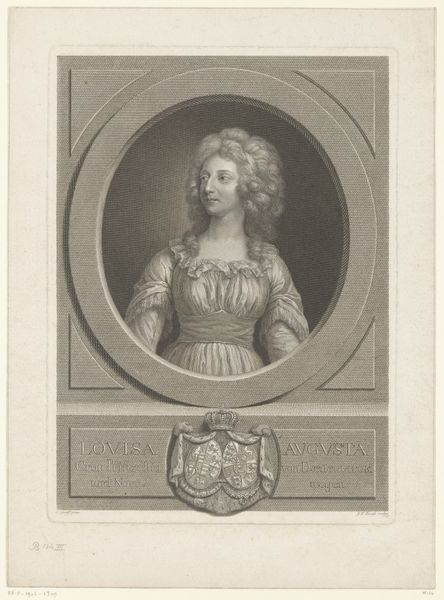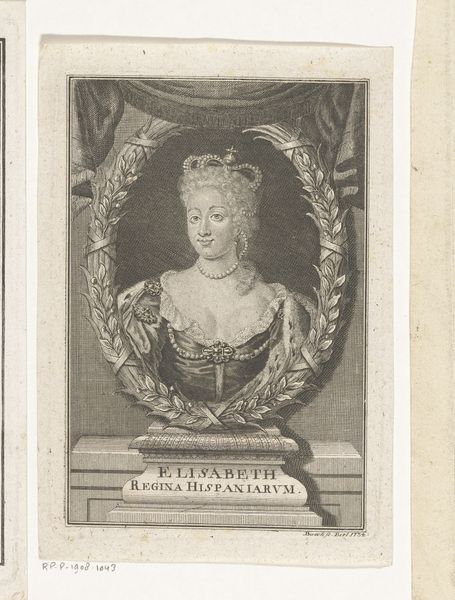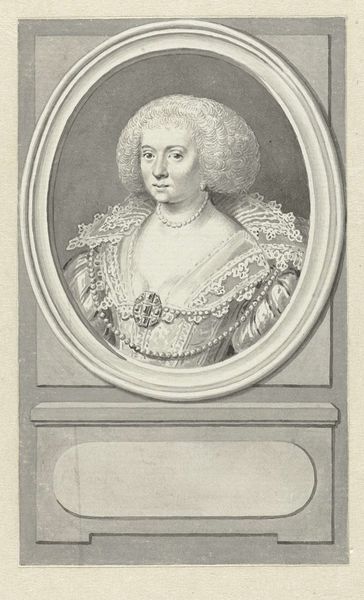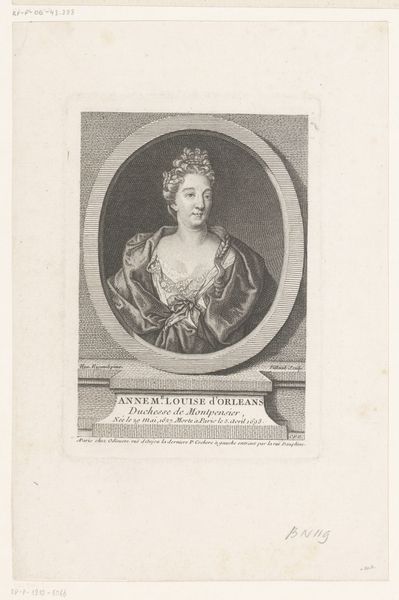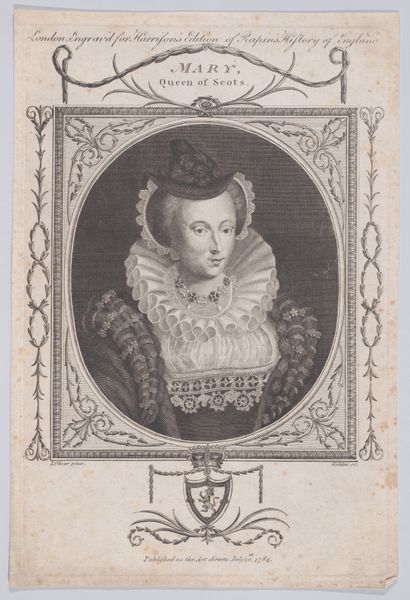
drawing, print, engraving
#
portrait
#
drawing
# print
#
old engraving style
#
19th century
#
academic-art
#
engraving
Dimensions: Sheet: 7 11/16 × 4 5/8 in. (19.5 × 11.8 cm)
Copyright: Public Domain
Editor: Here we have Robert Scott’s print of Mary, Queen of Scots, dating from between 1770 and 1835. The delicate linework makes it seem quite somber. I’m curious – how do you interpret the formal elements of this piece? Curator: I observe a strict adherence to balance and symmetry in the composition. Notice the architectural framework, how it mimics and contains the subject. The octagonal shape disrupts an otherwise predictable geometry. Do you find that the structure confines or elevates the central figure? Editor: I think the architectural structure gives the portrait presence and a sense of classical dignity. Curator: Precisely. The engraving technique, with its network of fine lines, creates tonal variations. Note how light falls softly upon her face, contrasting with the denser shading that defines the folds of her ruff and the details of her dress. Observe how line and tone create the visual textures, even within a monochromatic scheme. What does this limited palette convey? Editor: The monochrome keeps the focus squarely on the details and texture and the subject matter itself. The stark contrast highlights both opulence and restraint in her portrayal. Curator: An astute observation. Consider how the artist has employed line and form to convey character. It's interesting to observe the interplay between rigid structure and soft form. The subject's gaze draws you into the piece. The print utilizes this limited palette in order to emphasize balance, symmetry and depth to convey a specific message. Editor: That's very helpful. I never thought of it quite that way, considering just the shapes and balance rather than just the history of the figure. Thank you.
Comments
No comments
Be the first to comment and join the conversation on the ultimate creative platform.
